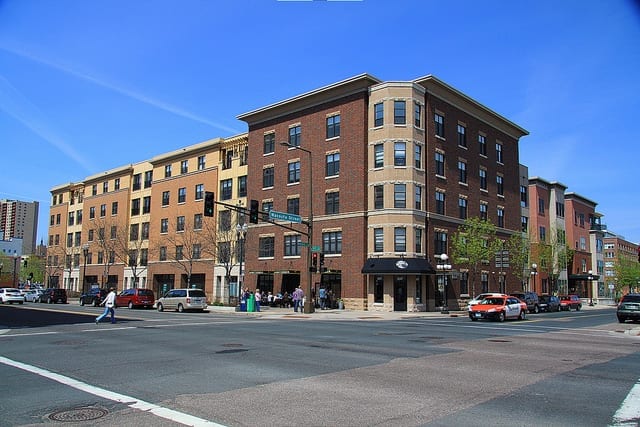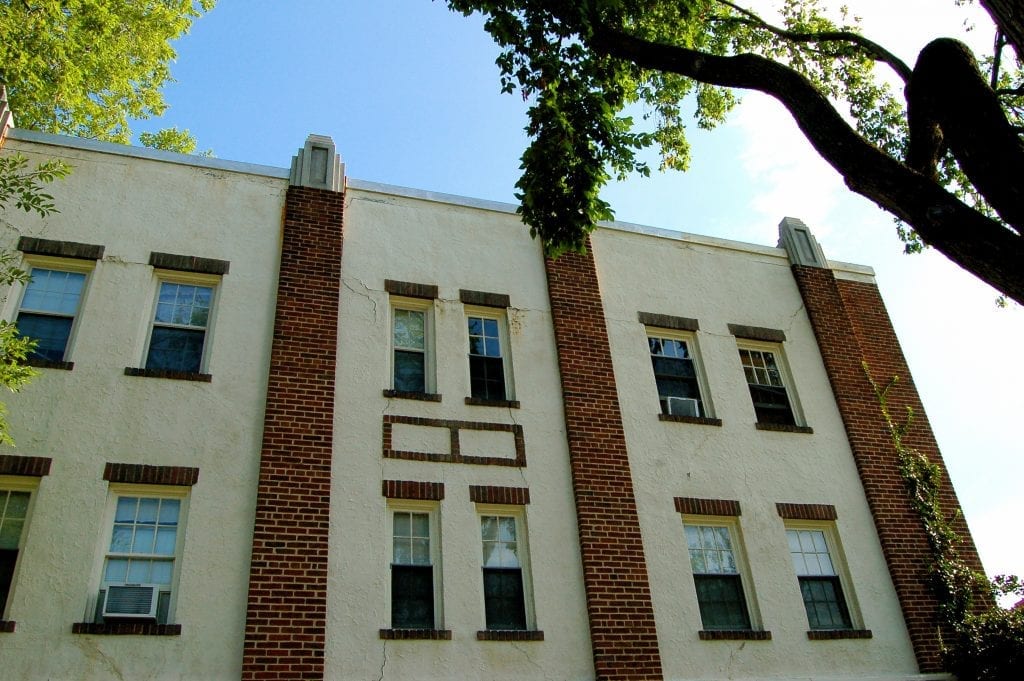 You’re probably already familiar with the power of commercial real estate. For example, if you’re able to increase rents by $50 and decrease expenses by $50 per unit per month and you have a 24-unit apartment building, you’ve increased the income of the property by $28,800 per year. Not that much, you say? It doesn’t seem like much. But if you assume that the capitalization rate is 8.5% for buildings like this in this area, then your tiny increase in income increased the value of the property by $338,824. Sound a little better? “Yes,” you say, “but how do I create this value?” Here are 8 ways you can increase the income of your asset and increase the value to maximize your profits with apartment buildings.
You’re probably already familiar with the power of commercial real estate. For example, if you’re able to increase rents by $50 and decrease expenses by $50 per unit per month and you have a 24-unit apartment building, you’ve increased the income of the property by $28,800 per year. Not that much, you say? It doesn’t seem like much. But if you assume that the capitalization rate is 8.5% for buildings like this in this area, then your tiny increase in income increased the value of the property by $338,824. Sound a little better? “Yes,” you say, “but how do I create this value?” Here are 8 ways you can increase the income of your asset and increase the value to maximize your profits with apartment buildings.
8 Simple Ways Maximize Your Apartment Building Profits
Tip #1: Reduce your water bill.
In many cases, you (the owner) is paying for your tenant’s water bill. The biggest reason the building’s water bill is high is because there are leaks and drips. The best way to catch these is to encourage your tenants to report them, to look for water issues whenever the property manager enters the unit and to do regular unit inspections. Another way you can drastically reduce your water bill is to install low-flow toilets, faucets and shower heads. There will be a capital expense to do so, but the break-even is several months, not years. 
Tip #2: Reduce your heating bill.
If you’re paying for heat, then your heating bill will be a challenge to control. That’s because your tenants will have the heat turned to full blast in the middle of winter with the windows wide open. This is why you should try to stay away from buildings where you have to pay for the heat. A good option if you are paying for heat is a programmable thermostat. Even though the tenant could override the programming, most will not do so because it’s too complicated to figure out. If set to EPA standards, programmable thermostats can save a significant amount of energy and costs.
Tip #3: Reduce your electrical bill.
Another way you can reduce your electrical bill is to replace all lighting with energy-saving bulbs.
Tip #4: Challenge your property tax assessment.
If you are buying a property substantially below its tax assessed value, you should appeal the tax assessment. The process may take several months, but it is worth it. One of my buildings was assessed at $650,000 and had a $5,100 per year property tax bill. I purchased it for $475,000, appealed the tax assessment and got it reduced to $525,000, which reduced my taxes to $3,800.
Tip #5: Price shop your vendor contracts annually.
Each year, price shop your insurance, trash, landscaping, janitorial and other vendor contracts to see if you can improve over the previous year.
Tip #6: Increase rents.
The most obvious way to increase income is to increase rents. This is sometimes easier said than done for a variety of reasons. However, you and your property manager should always be on the look-out for ways to increase rents. If the rents in your building are below average in the area, ask yourself why that is. Perhaps the other apartment buildings are in better condition or offer better amenities. Before you buy a building, be very clear what your business plan is to increase rents. You may decide that the exterior of the building needs work to look more appealing and more comparable to the competition. This may require the installation of awnings, a new sign, painted shutters and improved landscaping. Sometimes even minor cosmetic improvements like this improve the curb appeal substantially and make the property more desirable. The size of the units affect the rent. If your units are below the average size for the area, it will be tough for you to get the average market rent. If the competition has a laundry area and you don’t, then this will put downward pressure on the rents as well. However, if your product at least matches that of your competition and your rents are below market, then it’s time to increase rents. If your building is in a rent-controlled area, then you can’t arbitrarily increase rents as you please. Rent control laws regulate exactly how much you can increase rents. Therefore, increasing rents in a rent-controlled building can take a long time, unless you rent to Section 8/subsidized housing voucher tenants, who are exempt from rent control. The local housing authority who runs the voucher program typically pays above-market rents for their tenants, and so this is a GREAT way to increase income and reduce delinquencies. If your building is not in a rent-controlled area, then you can send a rent increase notice as soon as the leases of each tenants expire. You have to consider the impact of a rent increase on turn-over expenses and vacancies, but essentially you can ask whatever you want. Make sure you increase the rents by something each year so that the tenants get used to an annual rent increase, even if it’s only very little.
Tip # 7: Install laundry facilities or vending machines.
Do not underestimate the income from laundry or vending machines. Let’s do some quick math on a washer and dryer. Let’s assume each unit does two loads of laundry per week. Let’s assume one washer load costs $1.25 and the dryer also costs $1.25. That’s $5 per week or $260 per year. At a 10-cap, you just added $2,600 of value per year. If you have 10 units, then you just increased the value of your building by $26,000 just by adding laundry facilities. In addition to increasing the income, you also added an amenity to the building, which may allow you to ask a little more in rent. 
Tip #8: Pass on utility expenses with the RUBS system.
RUBS stands for “Ratio Utility Billing Systems” and may be appropriate for situations where the constraints of space and/or construction do not allow a property to be submetered (i.e. to have separate gas, water or electrical meters installed for each unit). RUBS can be done for almost all utilities, including water, wastewater, electric, gas and trash. Often, implementing a RUBS system requires no upfront capital investment. RUBS uses pre-calculated formulas based on industry-wide usage statistics. Once the RUBS system is in place, each tenant receives their own utility bill, which they must pay. While it may be technically feasible to use the RUBS system and pass your utility expenses to the tenants, you must first determine whether the market allows you to do so. If you’re the only owner passing along the utility expenses to your tenants and everyone else pays for water and heat, then you may have trouble filling your units or getting market-level rent! RUBS is most appropriate when it’s customary for tenants to pay for utilities, but the building you purchased is not separately metered. If the market allows for it, RUBS is an excellent way to increase your income!
Conclusion
Making money with apartment buildings is all about creating value. What I like about apartment buildings is that even a LITTLE value can have a huge impact on PROFITS. Increasing rents a little bit here, adding laundry machines there, re-evaluating your contracts and watching your utilities — all contribute a little bit to the bottom line. Multiply that little bit by the number of units for the entire year and divide it by the capitalization rate, and the result of your little improvements can mean BIG profits.
What other things have you done to increase income and decrease expenses?
1